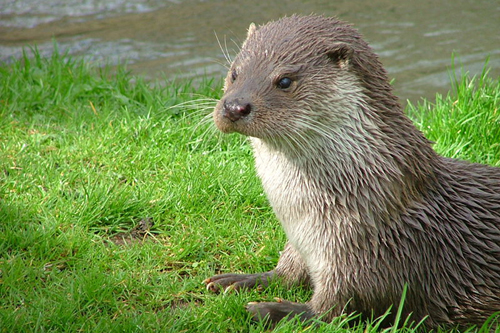OTTERS and badgers have been given their own secret tunnels under the approach roads to the new Forth Bridge – to help keep the feisty species apart.
Transport bosses ordered underground crossings to reduce the number of creatures killed by traffic on the £1.5bn bridge.
But otters and badgers – both of which aggressively defend their territory and food supply – now have their own tunnels which will help minimise the chances of them hurting each other.
Niall Corbet, operations manager with Scottish Natural Heritage, said: “Each tunnel has been designed to follow their individual behaviour and their natural routes.
“If they did come face to face then I imagine one would back off and run away and wait till the coast was clear before going through.
“In a fight my money would be on the badgers.”
Mr Corbet said the tunnels had been built on the new approach road from the M9 to the bridge, which is due to open in 2016.
He said: “With the otter tunnels contractors had to do some stream reconstruction to make it close to the otter’s natural routes as possible.
“Otters can trot along a ledge at the side of the tunnel which runs alongside a stream, or can swim in the stream.
“Badgers tunnels are higher up and dryer than the otters route. They are larger and cemented or made of steel.”
Stream
Transport Scotland is keen to keep the locations of the tunnels secret to minimise the risk of badger baiting.
Details of the underground passages are in a file marked: ‘Confidential Badger and Otter Information.”
The organisation even denied at first that separate tunnels for otters and badgers existed.
But a spokeswoman later confirmed: “One tunnel, lower down and running alongside a stream, will be preferable to otters. The other tunnel, higher up, will be preferable to badgers.”
There are no such passages at the current Forth Road Bridge as legal requirements to protect animals did not exist in the 1970s when the bridge was built.
The badger and otter tunnels are amongst a raft of animal protection legislation put into place with the arrival of the new Forth Crossing.
Surveys
Last November it was revealed that work on the bridge would be halted if it became too noisy for the local fish population.
Sound levels in the river will be monitored to make sure fish including salmon and lamprey aren’t disturbed.
If it gets too loud, a warning will be beamed to builders’ smartphones – ordering them to down tools.
A series of PAMBuoy devices, costing £20,000 to £40,000 each, have already been attached to the existing Forth Road Bridge.
Detailed ecological surveys on the new bridge’s impact on red squirrels, water voles, bats and birds have also been undertaken.
